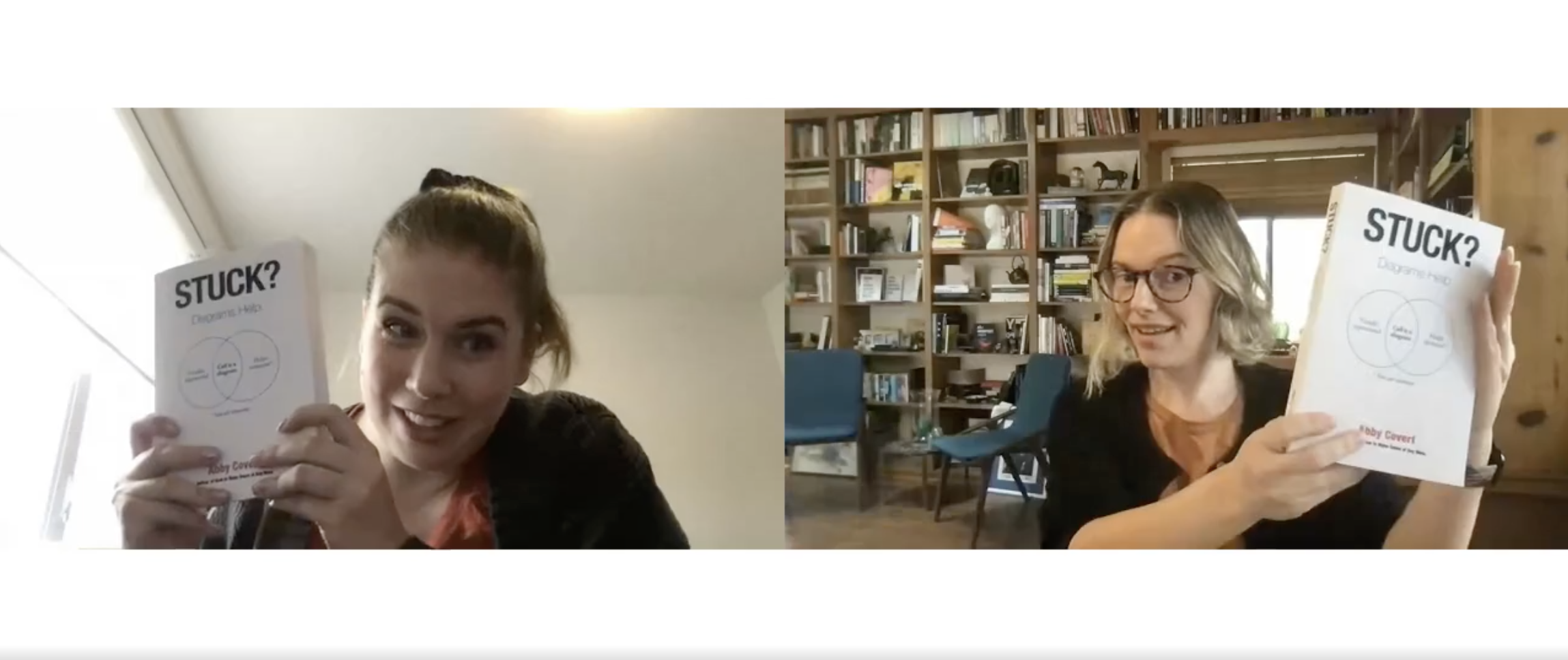Many people will recognize Covert from her previous book How To Make Sense Of Every Mess, in which she discusses information architecture and strategies that we can all use to gain clarity when facing a big mess of information. How To Make Sense Of Every Mess contains a chapter with 10 useful diagrams, which Covert told us was just the beginning of her journey to becoming a “diagram nerd”.
When teaching information architecture, she discovered a need for more information about how to create good diagrams. Her students would create beautiful diagrams, but they often would be missing information or weren’t as clear as they could be. Covert wrote a pamphlet for her students that outlined how to create good diagrams and immediately saw an improvement.
Covert told us that the pamphlet sparked an idea to write a short how-to book about diagrams. She showed an initial draft to a small group and received feedback that overwhelmingly screamed for more. “More information, more examples, just more” said Covert.
So, Covert started to gather more information and as she did, she was surprised to find that the topic of diagrams was a lot larger and richer than she ever expected. She quickly found herself buried in a mess of information about diagraming. Luckily, her first book is about exactly this situation. “I used my first book to write my second book,” laughed Covert.
Following the methods in How To Make Sense Of Every Mess, Covert created a longer version of that original diagramming pamphlet. However, as the topic of diagrams got broader, she had a bit of trouble defining the audience. Novices might be looking for basic how-tos of specific diagrams, whereas diagram nerds might be more interested in a literature review, and her book has both of those things. Covert came up with a creative solution to this problem by adding a “choose your own adventure” style chapter to help people navigate the book and find the parts that might be most interesting for them.
When asked about when a diagram might be useful, Covert shared with us that the title of her book, STUCK, is actually an acronym. Diagrams can be used to provide stability, transparency, understanding, clarity, and kindness. This made me think of my role as a UX designer and how often I use wireframes for very similar purposes. It turns out that wireframes are also diagrams!
My favourite part of Covert’s book are the eight inspirational stories that she has included to demonstrate the power of diagrams in relatable situations. When asked to share her favourite story, Covert told us “that’s like asking me to choose my favourite child. I love them all so much”. However she did share one of the stories in which a new employee used diagrams to figure out what exactly his company did, and then used those diagrams to explain that back out to the company. To spoil the ending, even some of the high-level employees at the company did not fully understand what the company did until they saw these diagrams.
Covert also invited members of the uxWaterloo community to share some of their experiences using diagrams, or situations in which diagrams would have been helpful. The quick and enthusiastic participation from multiple audience members further reflected Covert’s comments that diagrams are everywhere and widely useful.
Diagramming is a much bigger topic than I had ever considered before October’s uxWaterloo discussion and STUCK? Diagrams Help. is a great new resource for beginners who are just dipping their toes into the world of diagramming, as well as experts who have been using diagrams forever. Or perhaps, like me, you have been using diagrams for years and now that you realize that, you want to become a full-fledged diagram nerd.
You can get your own copy of STUCK? Diagrams Help. and How To Make Sense Of Every Mess through Covert’s website at abbycovert.com.





